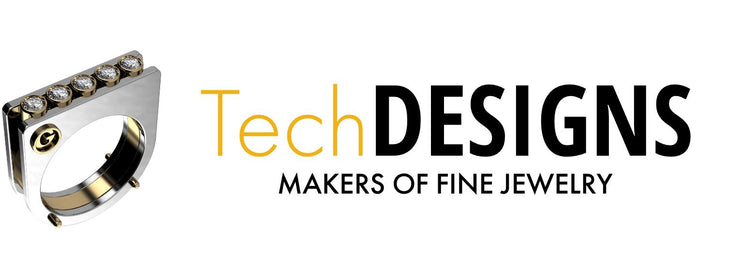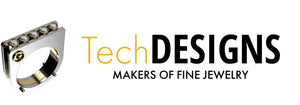In today’s jewelry trade, CAD (Computer-Aided Design) files are the backbone of production. They allow designers to bring their ideas to life, manufacturers to print and cast with precision, and clients to visualize the finished piece before it even exists.
But even seasoned jewelers run into problems when submitting CAD files for printing and casting. These mistakes can cause delays, increase costs, and even derail a project.
At Tech-Designs NY, we review CAD files every day for jewelers and retailers in NYC’s Diamond District. Here are the five most common mistakes we see, and how you can avoid them.
1. Submitting Incomplete Files
One of the simplest but most common issues is sending a CAD file that isn’t fully prepared. Missing elements, hidden layers, or incomplete geometry can lead to failed prints or miscasts.
💡 Tip: Before submitting, double-check that your model is watertight - meaning no gaps, overlaps, or missing surfaces. Export in standard formats like .3dm or .stl for the smoothest processing.
2. Forgetting Stone Dimensions & Seat Prep
Designers sometimes submit files without accurate stone measurements or prepared seats. This creates major problems in setting and may require redesign.
💡 Tip: Always include precise stone dimensions in your CAD model. Proper seat depth and prong alignment save time at the bench and ensure stones are secure.
3. Over-Complicating Details
Intricate filigree, micro-pavé layouts, or thin elements can look stunning on screen but may not print or cast properly. Extremely fine details often break during finishing.
💡 Tip: Know the technical limits. Walls and prongs should meet minimum thickness standards. Ask your caster for guidelines on safe dimensions before finalizing the design.
4. Skipping Structural Integrity Checks
It’s easy to focus on beauty and overlook strength. Designs with unsupported spans, weak connections, or overly thin shanks often fail during polishing or everyday wear.
💡 Tip: Run a strength check on your design. If possible, print a quick prototype in resin before committing to precious metals. This helps catch weak spots early.
5. Exporting in the Wrong Format
Sometimes jewelers send PDFs or images instead of proper CAD files. Others export with low resolution, causing faceting or rough surfaces.
💡 Tip: For 3D printing and casting, stick with .stl or .3dm formats. For stone scanning or editing, high-resolution files are essential. When in doubt, ask your caster which format they prefer.
Why This Matters
Each of these mistakes may seem small, but together they can add hours (or days) to production time, not to mention unnecessary costs. In the jewelry trade, speed and precision are everything. Clean, accurate CAD files mean faster turnarounds and happier clients.
Final Word for Jewelers
CAD design is a powerful tool, but it’s only as good as the file you submit. By avoiding these five mistakes, you’ll save yourself (and your caster) time, money, and stress.
At Tech-Designs NY, our team specializes in reviewing and preparing CAD files for seamless 3D printing and casting. Whether you’re a designer, store, or retailer, we ensure your files are production-ready.
👉 Need help cleaning up your CAD file?
Upload your design for CAD assistance today
Call us at (212) 354-7575 to discuss your next project.


